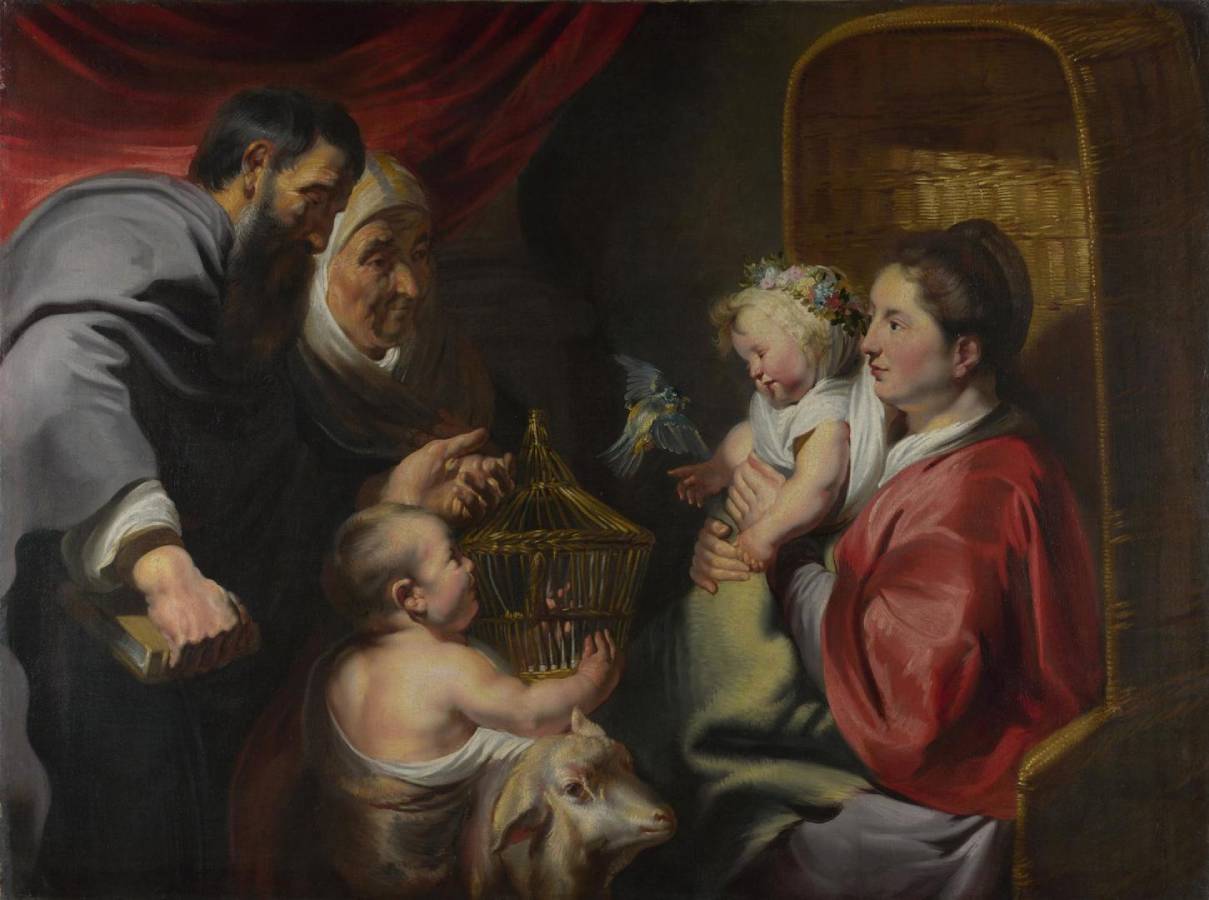Jordaens, Jacob (1593-1678)
Virgin and Child with Saints Zacharias, Elizabeth and John the Baptist
c.1620
Oil on canvas, 114 x 153 cm
National Gallery, London
We are watching an intimate family moment, apparently unnoticed. Two children are being introduced – they are the Christ Child and his cousin, Saint John the Baptist. From right to left, Jordaens has painted the Virgin Mary, the two cousins and John’s parents, Elizabeth and Zacharias. Compared to his ‘portrait-like’ The Holy Family and Saint John the Baptist, this painting looks more like a narrative moment. Instead of facing outwards, the figures interact with each other; none of them acknowledges the viewer.
The space in which the figures are gathered feels rather small. Between John and Christ there is a small menagerie: the young Baptist leans on a lamb while a goldfinch flutters from its cage towards Christ. The Virgin is seated on an unusual basket chair made of wicker, with Christ on her lap; the chair’s high back encircles them, acting as a kind of shelter. Christ wears a swaddling cap lovingly decorated with flowers which frame his rosy-cheeked face. A red curtain, pulled back to reveal a column, frames Elizabeth and Zacharias.
This childhood meeting is not mentioned in the Bible – it derives from a widespread apocryphal tradition in Italy and the Low Countries, and was popularised in both writing and images from the early Renaissance onwards. It prefigures the moment when Christ comes to be baptised by John, as told in the Gospel of Matthew (3: 13–17). According to the Gospel of John (1: 29), John the Baptist greeted Christ by describing him as the ‘Lamb of God’, which explains the presence of one of the animals here. The goldfinch, meanwhile, had a long iconographical history related to Christ’s Passion. The bird was believed to have been splashed with drops of Christ’s blood as it tried to pull a thorn from the torturous crown that had been placed on Christ’s head. It was the supposed origin of the red feathers on either side of the bird’s head. In some pictures the Christ Child holds up the goldfinch and spreads its wings, foreshadowing the Crucifixion. It was John the Baptist who foretold Christ’s Passion.
Jordaens painted different variations of this subject, and a picture in the North Carolina Museum of Art in Raleigh relates most closely to this one. Very likely to be the prototype, the Raleigh version is signed by Jordaens and was probably painted around 1615–16; the London painting is an autograph variant painted about 1620. Some art historians believe that Jordaens’ wife Catharina was the model for the Virgin Mary in both pictures, but this theory has been contested. (NG)
